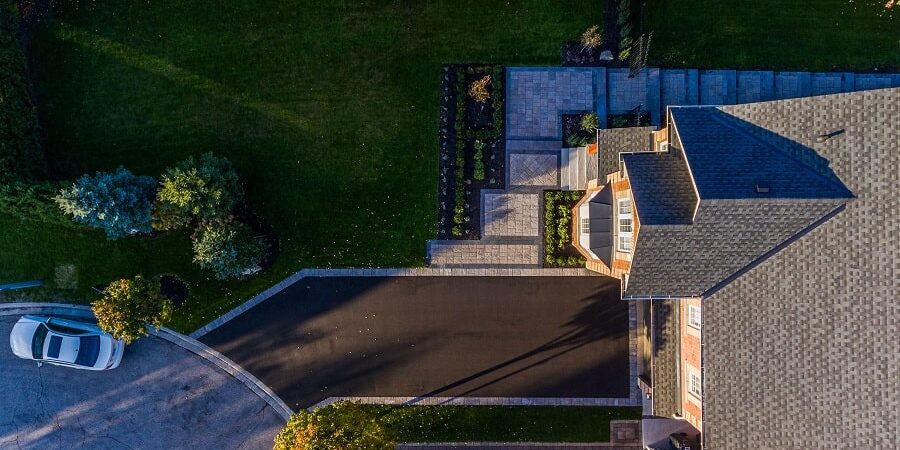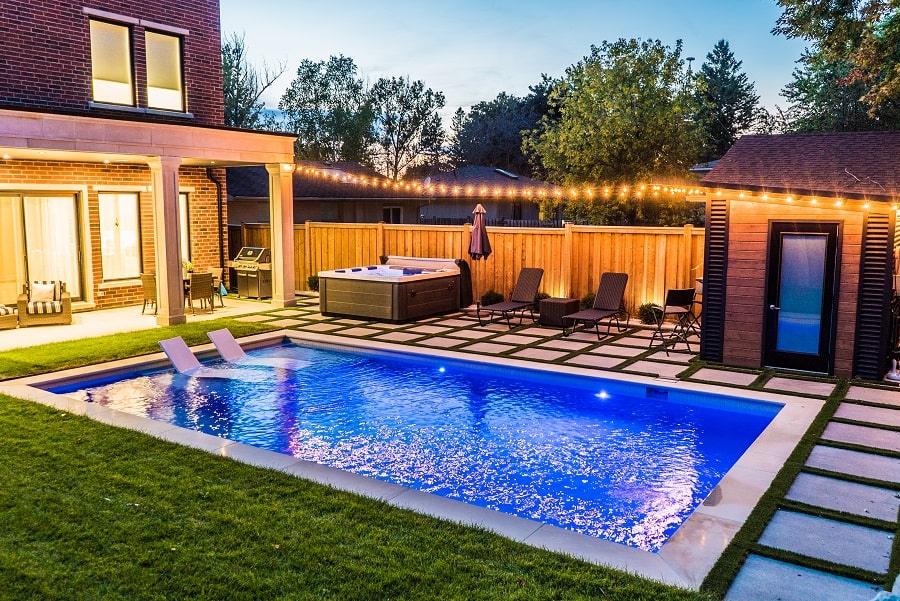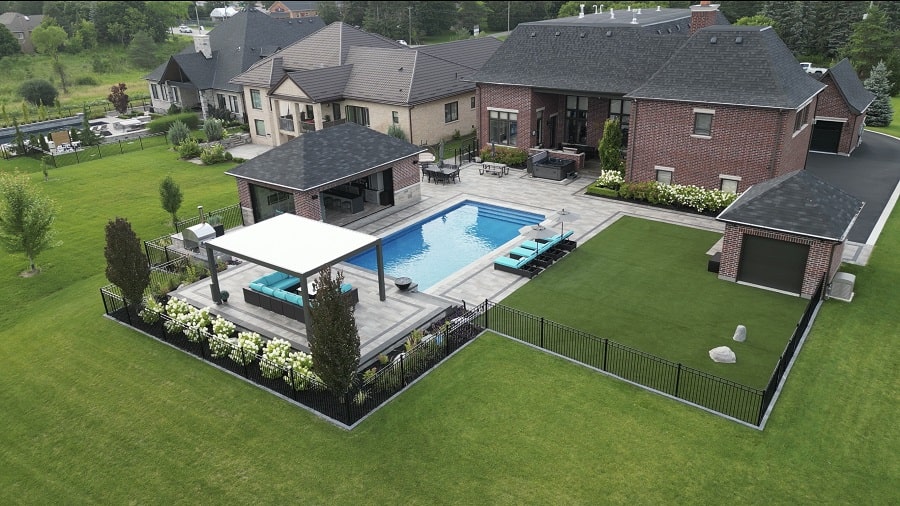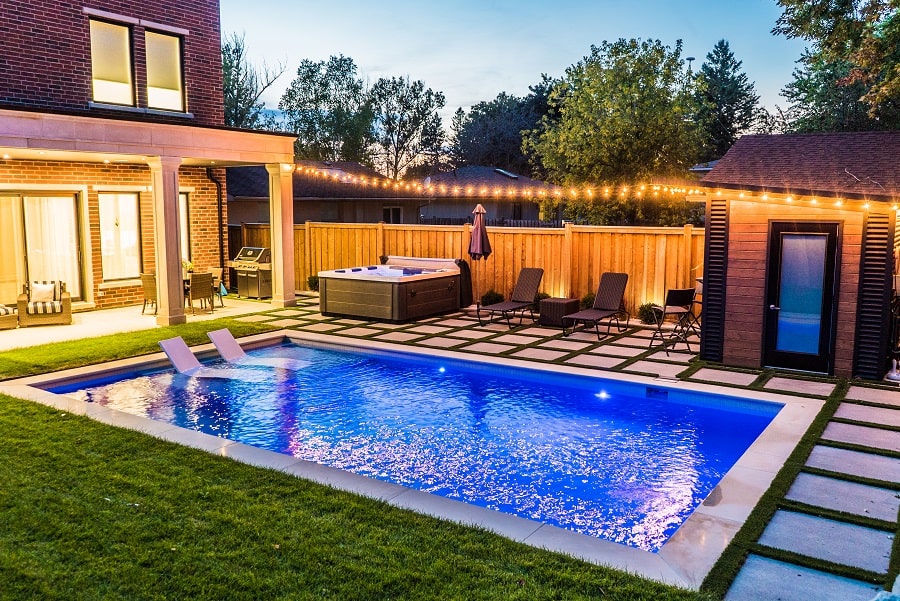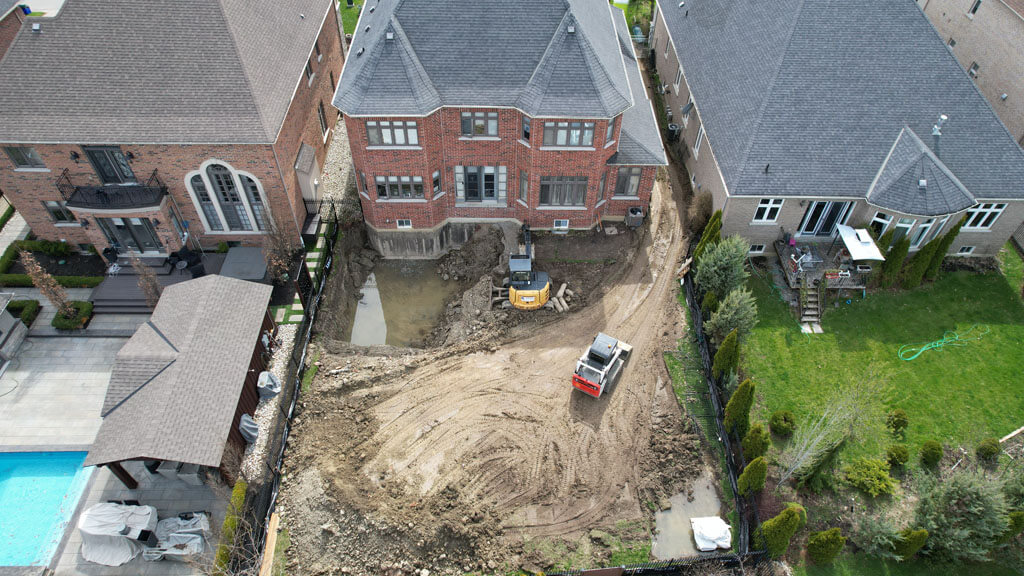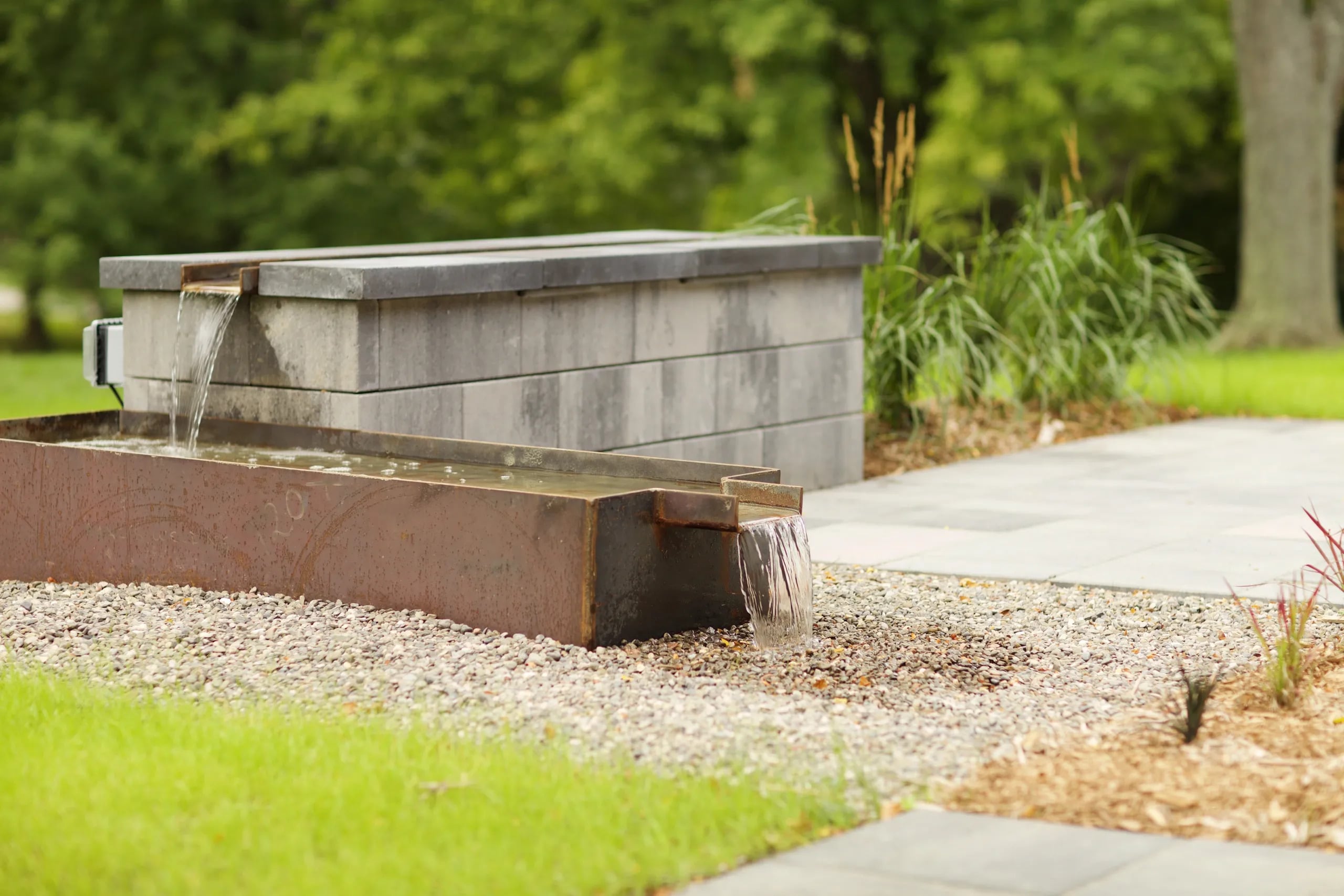In a city like Toronto, where seasons swing from snow-packed winters to humid summers, landscaping is more than just greenery. It’s about creating an outdoor environment that thrives in a climate with wide temperature ranges, diverse soil conditions, and dense urban sprawl.
Done right, Toronto landscaping not only boosts curb appeal but significantly increases property value and functionality. Done wrong? It leads to dead plants, drainage nightmares, skyrocketing maintenance costs, and outdoor chaos that detracts rather than adds.
Whether you’re planning a front yard landscaping design to impress or a tranquil backyard retreat to escape, knowing what not to do is just as important as knowing what works.
10 Mistakes You Should Avoid When Landscaping in Toronto
Mistake #1 – Ignoring Toronto’s Microclimates
You might think that because you live in Toronto, your landscaping choices should work just fine anywhere in the city. But here’s the twist: Toronto doesn’t have a uniform climate—it has a patchwork of microclimates.
Things like:
- South-facing vs. north-facing yards
- Shade from neighbouring buildings or large trees
- Wind tunnels between houses
- Pockets of urban heat trapped by concrete
All of these influence how well certain plants will grow in your yard. A lush front yard landscaping design that thrives in The Beaches might wither in High Park if the exposure and soil are different.
Tip: Spend a week observing your yard. Notice where the sun hits at different times of day, how wind behaves, and which areas stay damp after rain. Smart landscaping starts with understanding your space.
Mistake #2 – Overbuilding Hardscapes Without Drainage Planning
When it comes to landscaping in Toronto, many homeowners love installing sleek patios, interlocking driveways, or retaining walls. However, they forget that we sit on a lot of clay-heavy, poorly draining soil. When these hardscapes are built without proper drainage planning, you’re basically creating an expensive water trap.
The result? Flooded basements, soggy lawns, and long-term foundation damage.
Tip: Every hardscape should include a drainage plan. French drains, weeping tiles, and permeable pavers are your best friends. A well-built patio or walkway should channel water away from your home, not toward it.
Mistake #3 – Planting Too Close to Foundations and Fences
Those cute little saplings may seem harmless now. But give them a few years, and you could be facing cracked foundations, lifted pavers, or moldy fences.
Many Toronto’s landscaping projects forget to account for the mature size of trees and shrubs. Roots can infiltrate drainage pipes, foundations, or even neighbour property lines. And overhanging branches can cause shade where it’s not needed—or worse, damage during storms.
Tip: When planting, visualize the future—not just the now. That lilac bush may eventually stretch six feet wide. Leave enough room between plantings and built structures for healthy growth and easy maintenance access.
Mistake #4 – No Cohesive Design Vision
It’s tempting to fall into the Pinterest rabbit hole. But a landscape made up of every trendy idea on your mood board—Zen corner here, tropical vibe there, splash of cottagecore for good measure—can quickly turn your yard into a confused mess.
The most successful Toronto landscaping projects follow a clear, cohesive design vision. That doesn’t mean boring or minimalist. It means thoughtful. Unified. Connected to your home’s architecture and your personal lifestyle.
Tip: Pick a central theme or aesthetic, then choose materials, shapes, and plants that support it. A professional landscape design team can help align your dreams with real-world flow and function.
Mistake #5 – Underestimating Ongoing Maintenance Needs
A common misconception? That once your yard is beautifully landscaped, it takes care of itself. The reality? Some features are labour-intensive.
Things like:
- Raised vegetable beds that require constant care
- Ornamental grasses that need seasonal trimming
- Water features that need regular cleaning
- Edging that requires re-leveling each spring
Many homeowners underestimate how much time and effort it takes to keep things looking pristine.
Tip: Choose plants and materials that match your energy level and lifestyle. Love gardening? Great—go big. Prefer low-effort elegance? Opt for native perennials, mulch-heavy beds, and automated irrigation systems.
Mistake #6 – Skipping Soil Testing and Prep
You can spend thousands on plants, sod, and design and it’ll all go to waste if your soil isn’t up to par. Toronto’s soil ranges widely from sandy patches near the lake to heavy clay in the north and east ends.
Yet many DIYers or budget landscapers skip one of the most important steps: soil testing and amendment.
Without this, you risk stunted plants, poor drainage, or beds that constantly need replanting.
Tip: Start with a soil test. It’s inexpensive and invaluable. Based on the results, amend with compost, adjust pH, or install drainage systems. A solid foundation is the difference between short-term beauty and long-term sustainability.
Mistake #7 – No Functional Zones in the Landscape
In Toronto’s dense urban neighbourhoods, space is gold. Many homes, especially semi-detached or townhouses, have limited backyard space. One of the most overlooked mistakes in Toronto landscaping is failing to break this space into functional zones.
Think about it: Would you build an open-concept house with no distinction between kitchen, living, and sleeping areas? The same logic applies to your outdoor space. Without designated areas, the yard can feel cluttered, awkward, or just plain underused.
Smart landscaping design divides the space into intentional zones:
- A lounging or seating area
- A BBQ or outdoor dining nook
- A play area for kids or pets
- A vegetable or pollinator garden
Tip: You don’t need big walls or structures to define zones. Use low-maintenance elements like pavers, planters, garden beds, or hedges to guide the flow. Even a change in material—gravel to decking, grass to stone—can create clear divisions without feeling boxed in.
Mistake #8 – Using Low-Quality Mulch or Decorative Rock Incorrectly
Mulch and rock may seem like minor details, but they play a major role in the performance and appearance of your Toronto’s landscape design. Unfortunately, many homeowners opt for cheap mulch that disintegrates quickly or decorative rock that’s not right for the space.
The wrong choices can:
- Retain too much or too little moisture
- Encourage weeds
- Cook your plant roots in hot weather (yes, rocks can bake your garden!)
A thick layer of dyed mulch may look great in spring but can decompose fast, while overly packed rock can prevent proper water flow and suffocate plant roots.
Tip: Choose natural mulch like cedar or pine bark that breaks down slowly and improves soil. Use it primarily to retain moisture, insulate roots, and block weeds—not just for looks. And when using decorative rock, leave space around plant bases to allow airflow and prevent rot.
Mistake #9 – Not Considering the View from Indoors
Here’s a subtle but crucial misstep: planning your landscaping to only look good from the outside. Great landscaping isn’t just a visual gift to your neighbours. It should enhance your daily life inside the home, too.
What do you see from your kitchen window? Or from your upstairs bedroom? Is there a focal point that draws the eye—a tree, sculpture, or flowerbed? Or is it just a blank fence?
Tip: Treat your windows like picture frames. Design your landscaping in Toronto with intentional views in mind—especially for those long Canadian winters when you’re spending more time indoors. Whether it’s evergreens for year-round texture or strategic lighting, your landscape should be as enjoyable from inside as it is from the patio.
Mistake #10 – Ignoring Permit Rules and Property Lines
It’s easy to get caught up in design ideas and start building fences, decks, or pergolas—only to later find out you’re violating a by-law or encroaching on your neighbour’s land.
In Toronto, regulations can be strict when it comes to:
- Setback rules (how close you can build to the property line)
- Maximum deck height or fence height
- Tree protection zones
- Drainage redirection
The result? Costly fines, project delays, or being forced to tear it all down.
Tip: Always check Toronto building codes and zoning regulations before you dig or build. When in doubt, work with a licensed landscaping professional who understands local by-laws and can guide the permit process from the start.
Conclusion
Landscaping in Toronto is an exciting journey—but as we’ve seen, small oversights can lead to big frustrations later. Whether it’s skipping functional zones, misusing materials, or running afoul of local rules, every mistake is preventable with the right planning.
By approaching your front yard or backyard landscaping design with foresight and expertise, you can create a landscape that is not only beautiful—but also practical, durable, and in harmony with Toronto’s unique conditions.
Transform Your Toronto Landscaping the Right Way
Don’t let common landscaping mistakes ruin your outdoor vision. Whether you’re revamping a compact front yard or reimagining your backyard retreat, our expert team understands the unique challenges and opportunities of landscaping in Toronto. From microclimates to zoning laws, we design and build with purpose, style, and long-term value in mind.
With our tailored landscape design solutions, you can avoid costly errors, maximize every square foot, and enjoy a space that reflects your lifestyle—all year round. We don’t just plant shrubs and lay stone. We create outdoor environments that thrive in Toronto’s climate and complement your home’s character.
Ready to turn your yard into a smart, stunning sanctuary? Book a free consultation with our landscape design experts today and start your project on the right foot. Call us at 416.504.5263 or write to us at info@landcon.ca to learn more about our services.



